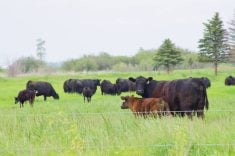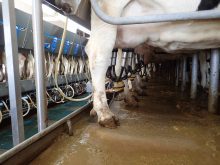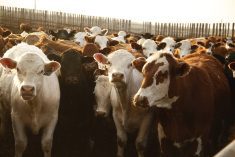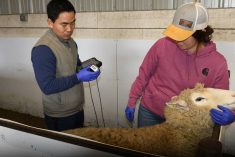Dairymen have been using it for years to get heifer-only calf crops; now beef producers are trying out sexed semen.
Guy Johnston, of Shoreline Stock Farm near Eddystone, is the first in Manitoba to join the ranks of an estimated 200 beef producers in Canada using the new ar tificial insemination (AI) technology.
For me, it s just more money in my pocket, whether for selling bulls or steers, said Johnston, who added that his latest trial succeeded in producing 100 per cent male offspring.
For years, Shoreline Stock Farm had been using imported AI semen to produce composite bulls using the best genetics from around the world in about 100 head of their 500-head breeding cow herd.
Read Also
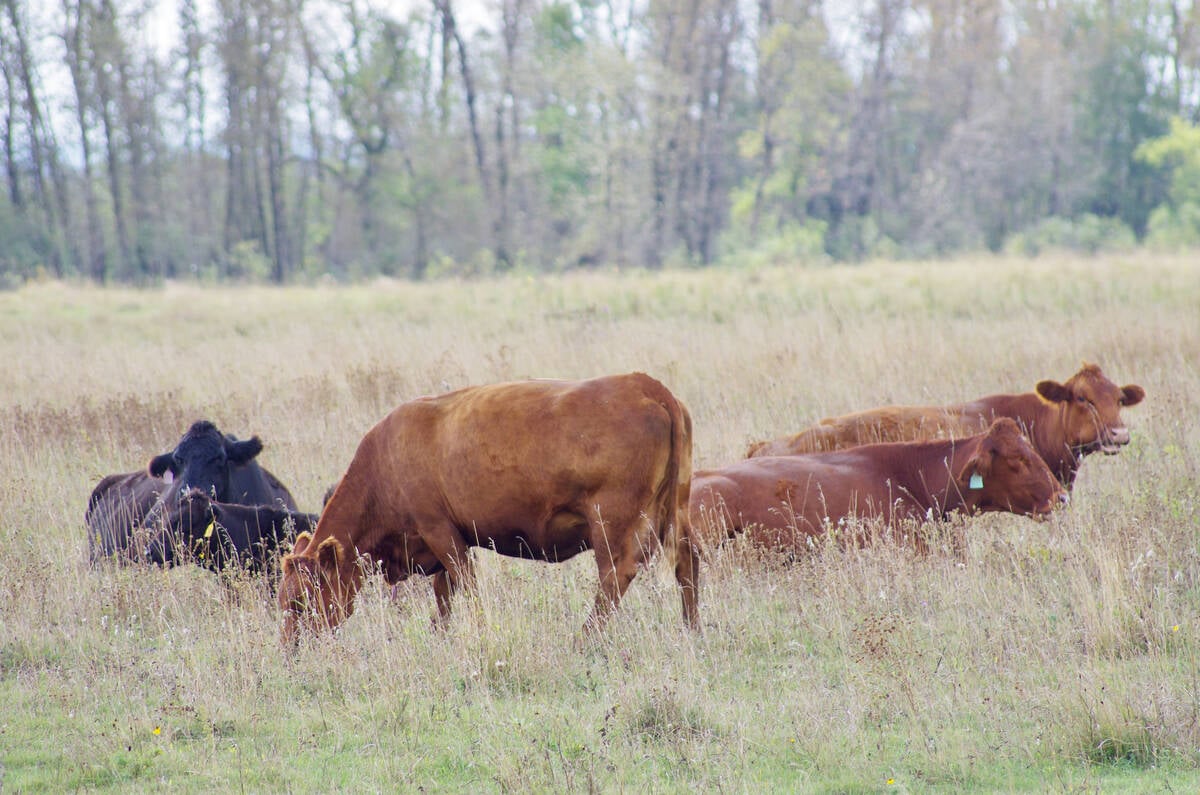
Fall grazing flush can set cattle up for fog fever, or ‘the grunts’
Using hay to limit gorging during a sudden fall pasture flush can avoid the dietary shock that sets cattle up for acute bovine pulmonary emphysema, or ‘fog fever.’
Because he was already doing a lot of AI breeding, he decided to try out the sexed-semen technology, and this fall, he delivered two bull calves bred with sexed semen to the Douglas Test Station for performance trials.
Although AI is a lot more work, and current conception rates are generally lower than running live breeding bulls with the herd, he believes that being able to pick the gender of beef cattle and avoid the heifer discount is a trend that will catch on.
I think males, just as calves, will probably sell for $150 to $200 more in the fall, he said.
The practice might not be for everyone, and the technology is still new, but Johnston notes that once farmers see clear advantages, they quickly jump on the bandwagon.
If you asked extension agents 30 years ago if people would be soil testing and applying variable-rate fertilizer in their fields with GPS in totally straight lines and working on their BlackBerrys at the same time, they d say you were crazy, he said.
The extra work of AI in general is the main obstacle to widespread adoption of sexed semen. June calvers, for example, would need to round up and inseminate their herds in the middle of summer.
AI breeders aim for 75 per cent conception rates. In his herd, the conception rate for sexed semen was slightly lower, at 55 per cent, compared to 65 per cent for regular semen. First-calf heifers tend to do better, he added.
Johnston wasn t totally satisfied with his conception rates, but some of the cows that were bred were older, and he admitted that a few mistakes were made. If everything was perfect, he believes that a 65 per cent catch rate with sexed semen would be possible.
The conception rate wasn t perfect, but the male-female ratio was amazing, he said. But this technology is going to get better. I think there is a good future for it.
For his operation, bull calves are the target. But for ranchers wanting to bring in bigger frame sizes, choosing female-only semen, which typically results in smaller calves, could make for easier calving.
Sexed semen is produced via a sorter which can separate sperm into two gender- based streams because female sperm, which contains an X chromosome, has greater DNA mass than the Y in the male counterpart.
Johnston has been using product from Wisconsinbased Genex, which has a Canadian office in Guelph, Ont.
Richard Carlson, Western Canada sales manager for Genex, said his company has been offering it for about five years.
Uptake for dairy has been phenomenal for obvious reasons, and lately, a very good increase in sales has been seen with beef producers.
He estimates more than 200 commercial and breeding operations are buying the product for prices ranging from $5-$20 extra, depending on whether females or males are desired.
The price is largely dependent on supply and demand, he said. Some exceptional bulls are best for daughters, and some for sons, and a few are good for both genders.
Commercial beef herds are the fastest-growing market segment, he added, with many choosing sexed semen to produce more uniformity in replacement heifers.
For large operations selling direct to feedlots, being able to ship steer-only calf crops lets them capture a price premium.
———
For me, it s just more money in my pocket, whether for selling bulls or steers.
GUY JOHNSTON






